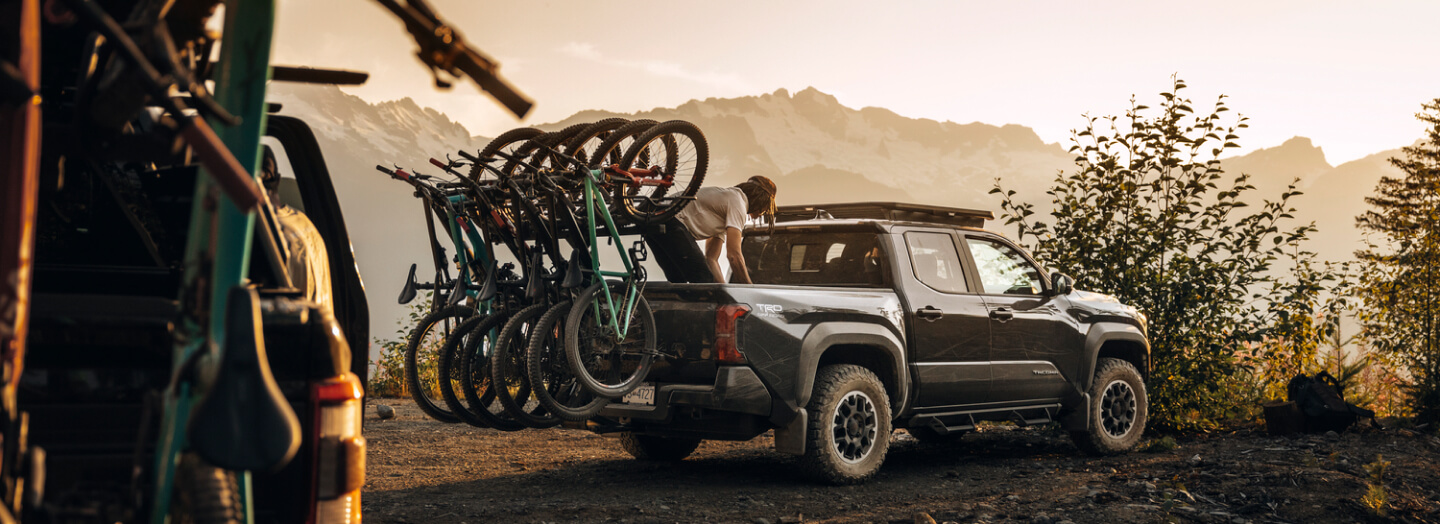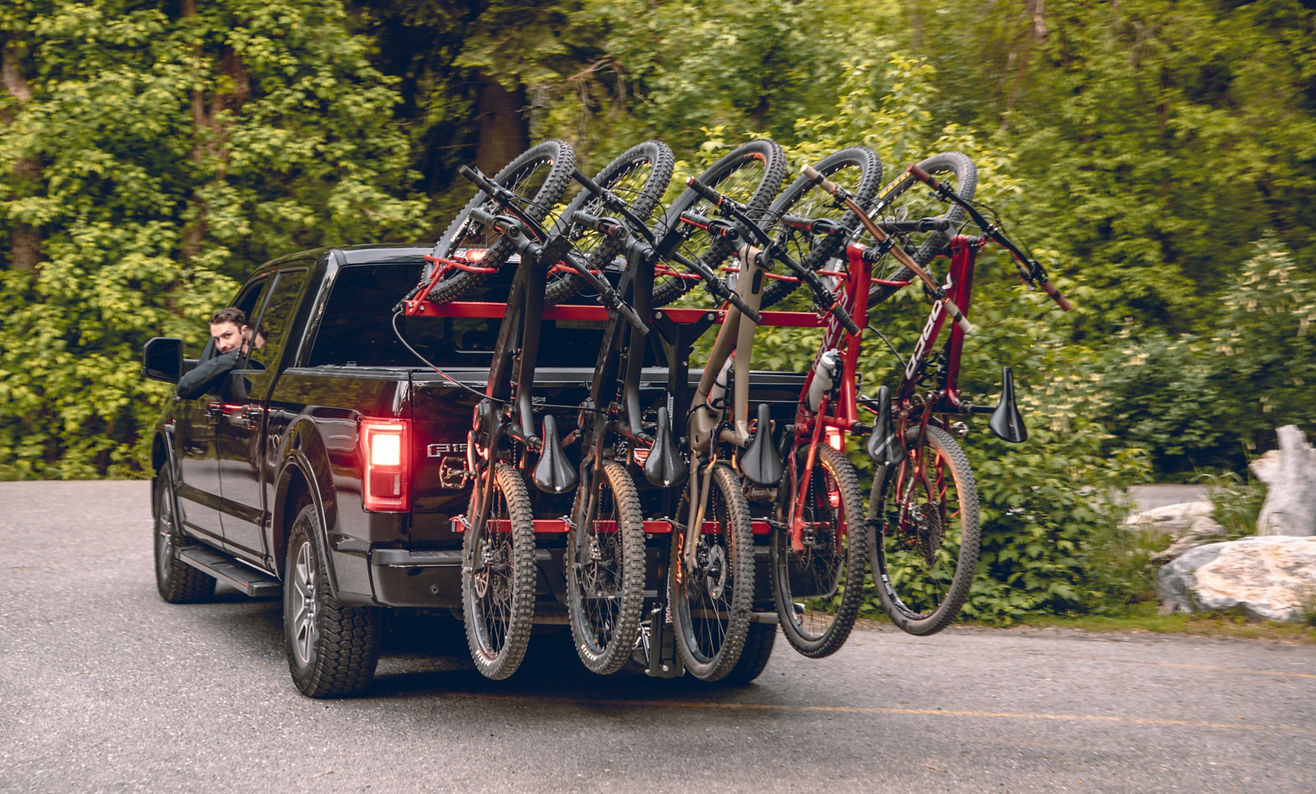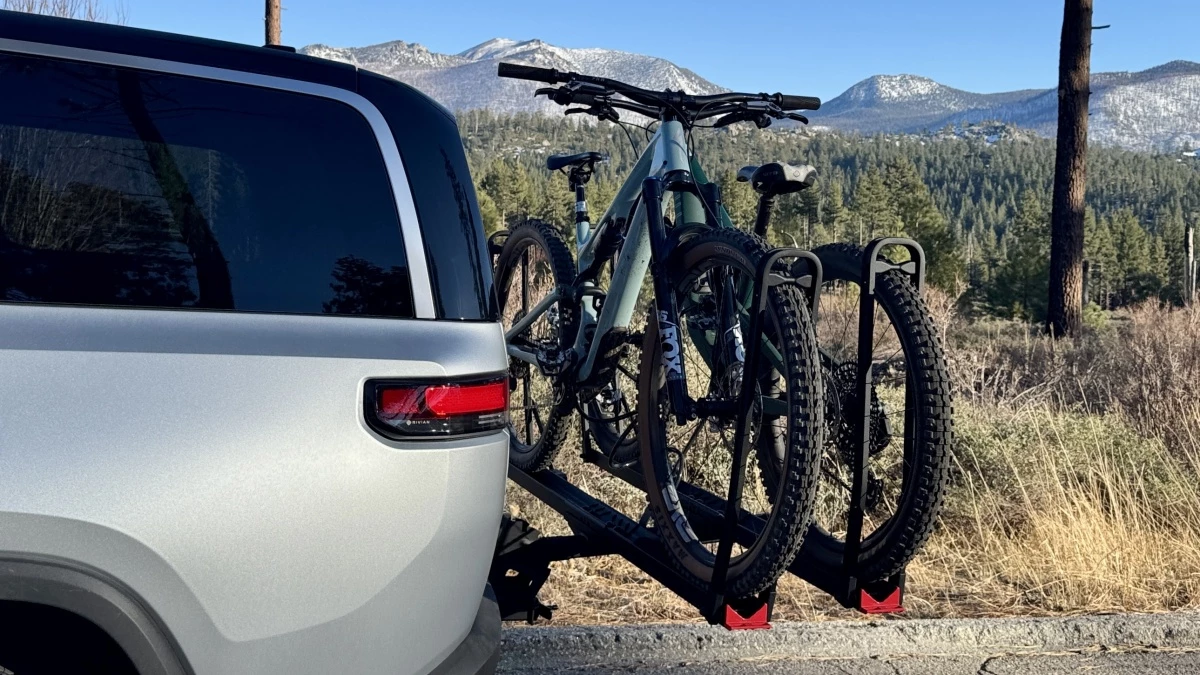I’ll be real—I didn’t expect buying a bike rack to turn into a full-on research mission. I just wanted to carry my bikes without messing them up. Simple enough, right? But when I started looking, it turned into platform vs. vertical, wheel clamps vs. hanging hooks, tilt-down vs. swing-away… I got overwhelmed fast.
If you're reading this, chances are you're facing the same decision I did. You’ve got bikes, a hitch on your car, and now you're stuck trying to figure out: which rack actually makes sense for me?
I’ve used both. I’ve done solo rides, family trips, group shuttles up the mountain. I've loaded bikes in parking lots, on dusty trails, and in the pouring rain. So here's everything I wish I’d known before I dropped hundreds of dollars on my first rack—and why I still ended up with two.

What Exactly Is a Platform Hitch Rack?
Let’s start with platform racks. Picture this: your bike sits flat on a tray, both wheels supported, frame untouched. It’s clamped by the tires or the fork, not the frame. This type of rack is what most people think of when they imagine a "premium" bike rack.
I got my first one after buying a carbon bike. The idea of hanging that thing on a metal hook gave me anxiety. I needed something more gentle—something solid.
Why Platform Racks Are a Crowd Favorite
-
You don’t lift the bike high. Loading is simple—even for heavier bikes.
-
No part of the rack touches the frame, so you avoid scuffs and scratches.
-
Once it's loaded, it stays put—even at 70 mph on the highway.
-
Great for any kind of bike: road, gravel, e-bike, kids' bikes, you name it.
But… Here’s the Downside
-
They’re heavy. Installing one is basically a workout.
-
They stick out far from your vehicle, which isn’t great for tight parking.
-
Most models cost more than vertical racks, especially the ones that fold or tilt.
I didn’t love the bulk, but honestly, once I saw how securely it held my e-bike, I stopped caring about the weight.
So… What’s a Vertical Hitch Rack?
Now, vertical racks? They look a little more aggressive. Bikes hang vertically by the front wheel, kind of like clothes on a rack. It’s a smart way to fit more bikes in a smaller space. These racks are super common among shuttle setups or group MTB riders.
I used one on a trip with five friends—mountain bikes everywhere, mud everywhere. The vertical rack fit all our bikes without a problem. It looked like a jungle of handlebars back there, but nothing fell off.
Why Vertical Racks Work for Some People
-
You can carry more bikes—some racks hold six.
-
They’re lighter, easier to install and remove.
-
Perfect for shuttle runs or weekend race teams.
-
They don’t stick out much from your car.
What You Need to Watch Out For
-
Lifting bikes high (especially e-bikes) can be tough.
-
Bikes might rub against each other—especially if you’re not careful loading.
-
Not all bikes fit—step-through frames, small wheels, and heavy bikes don’t always work well.
It’s not a one-size-fits-all solution, but it’s a winner for group MTB rides.

What Are People Really Searching For?
I dug into forums. I read reviews. I asked local riders. Turns out, most people aren't just asking “platform or vertical?” They’re wondering:
-
Can I lift my e-bike onto this?
-
Will my carbon frame get scratched?
-
Is this thing going to block my trunk?
-
Which one’s better for road trips?
-
What if I have a mix of adult and kid bikes?
Let’s get into those questions.
Which One Is Better for E-Bikes?
Platform. Every time. E-bikes are heavy—some pushing 70 lbs. Most vertical racks just aren’t built for that. And lifting an e-bike over your shoulder? No thanks.
Look for a platform rack with a high weight rating, or even better, one with a loading ramp. Makes life easier.
What About Kids' Bikes?
This one’s trickier. Many vertical racks can’t handle bikes with small wheels or step-through frames. I tried loading my niece’s 16” bike once. Nope. Fell right through the cradle.
Platform racks are more forgiving. As long as the wheel fits in the tray, you’re good.
Will It Work With My Car?
Here’s where a lot of people trip up. Not all racks play nice with every vehicle.
If You Drive an SUV:
You’ve got options. Either rack should fit fine. Platform racks will block your tailgate unless they tilt down.
If You Drive a Sedan:
Be careful with height. Vertical racks might stick up too high or feel unstable. Platform racks are usually better here—just make sure it clears your trunk when folded.
If You Drive a Truck:
Vertical racks are popular with truck folks. They keep the tailgate clear and can carry lots of bikes. But make sure your hitch height doesn’t leave the rack dragging low.
Platform vs. Vertical – Full Breakdown
|
Feature |
Platform Rack |
Vertical Rack |
|---|---|---|
|
Loading Effort |
Low (waist-level) |
High (shoulder height or more) |
|
Frame Contact |
None |
Yes (can rub in transit) |
|
Bike Types Supported |
All (e-bikes, kids, carbon) |
Mostly MTB or hardtail frames |
|
Number of Bikes |
2–4 |
4–6 |
|
Weight of Rack |
50–75 lbs |
35–55 lbs |
|
Best Use |
Families, solo riders, e-bikes |
Group rides, MTB shuttles |
|
Price Range |
$450–$1,200+ |
$300–$700 |
|
Trunk/Tailgate Access |
Usually tilts down |
Often blocked or limited |
|
Installation Difficulty |
Harder (due to weight) |
Easier (lighter and simpler) |
Real-World Scenarios: Which One Wins?
Let me paint some real-life pictures. Maybe one of these sounds like you.
The Weekend Rider
You ride a few times a month. Maybe it’s a solo ride, maybe you bring your partner. You’ve got a road bike and maybe a gravel bike. You don’t want scratches, and you value ease of use.
Platform wins. Clean, secure, and quick.
The Trail Crew
You’ve got a group of 4+ riders. Everyone’s riding full-suspension MTBs. Loading and unloading fast is a must.
Vertical rack is your best friend. Just be careful loading bikes so they don’t knock into each other.
The Family Caravan
You’ve got a mix of bikes: one e-bike, a kids’ BMX, a step-through cruiser. You need something universal.
Platform. No doubt. It handles the chaos without flinching.
Final Thoughts: Which One’s Right for You?
There’s no one-size-fits-all. It really depends on your bike, your car, your back muscles, and your riding crew.
If you're hauling an e-bike, a carbon frame, or any mix of weirdly shaped bikes—go with a platform rack.
If you’re the designated driver on group MTB weekends and don’t mind the lift—go vertical.
Honestly? I keep both. One for everyday rides. One for shuttle days. But if I could only have one? Platform, hands down.
Still not sure? Take a look at some of our best-selling racks—we’ve tested them, loaded them, and driven them on bumpy roads just like you will. Happy hauling!




